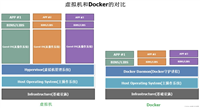在mongodb中配置和使用多数据源主要涉及以下几个步骤:
定义多个数据源的配置:
- 在应用程序的配置文件中,定义多个mongodb的数据源,例如在spring boot中可以通过application.yml或application.properties文件进行配置。
创建多个mongotemplate bean:
- 使用spring框架的java配置类,创建多个
mongotemplatebean,每个bean对应一个数据源。
- 使用spring框架的java配置类,创建多个
使用动态切换数据源的方式:
- 使用spring的aop(aspect-oriented programming)或其他方法,在运行时根据需要动态切换数据源。
以下是一个spring boot应用中配置和切换多数据源的示例:
1. 配置文件 (application.yml)
spring:
data:
mongodb:
primary:
uri: mongodb://localhost:27017/primarydb
secondary:
uri: mongodb://localhost:27017/secondarydb
2. java配置类
import com.mongodb.client.mongoclient;
import com.mongodb.client.mongoclients;
import org.springframework.context.annotation.bean;
import org.springframework.context.annotation.configuration;
import org.springframework.context.annotation.primary;
import org.springframework.data.mongodb.core.mongotemplate;
@configuration
public class mongoconfig {
@primary
@bean(name = "primarymongotemplate")
public mongotemplate primarymongotemplate() {
mongoclient mongoclient = mongoclients.create("mongodb://localhost:27017/primarydb");
return new mongotemplate(mongoclient, "primarydb");
}
@bean(name = "secondarymongotemplate")
public mongotemplate secondarymongotemplate() {
mongoclient mongoclient = mongoclients.create("mongodb://localhost:27017/secondarydb");
return new mongotemplate(mongoclient, "secondarydb");
}
}
3. 动态切换数据源
方法一:使用aop动态切换数据源
你可以定义一个自定义注解,然后使用aop在运行时切换mongotemplate。
import org.aspectj.lang.annotation.around;
import org.aspectj.lang.annotation.aspect;
import org.aspectj.lang.reflect.methodsignature;
import org.springframework.beans.factory.annotation.autowired;
import org.springframework.context.applicationcontext;
import org.springframework.data.mongodb.core.mongotemplate;
import org.springframework.stereotype.component;
@aspect
@component
public class dynamicdatasourceaspect {
@autowired
private applicationcontext applicationcontext;
@around("@annotation(usedatasource)")
public object switchdatasource(proceedingjoinpoint joinpoint) throws throwable {
methodsignature methodsignature = (methodsignature) joinpoint.getsignature();
usedatasource usedatasource = methodsignature.getmethod().getannotation(usedatasource.class);
mongotemplate mongotemplate = (mongotemplate) applicationcontext.getbean(usedatasource.value());
try {
mongotemplatecontextholder.setmongotemplate(mongotemplate);
return joinpoint.proceed();
} finally {
mongotemplatecontextholder.clear();
}
}
}
定义注解和上下文持有者类:
import java.lang.annotation.elementtype;
import java.lang.annotation.retention;
import java.lang.annotation.retentionpolicy;
import java.lang.annotation.target;
@retention(retentionpolicy.runtime)
@target(elementtype.method)
public @interface usedatasource {
string value();
}
public class mongotemplatecontextholder {
private static final threadlocal<mongotemplate> context = new threadlocal<>();
public static void setmongotemplate(mongotemplate mongotemplate) {
context.set(mongotemplate);
}
public static mongotemplate getmongotemplate() {
return context.get();
}
public static void clear() {
context.remove();
}
}
方法二:直接在代码中切换数据源
你也可以直接在代码中注入多个mongotemplate,并根据需要选择使用。
@service
public class myservice {
@autowired
private mongotemplate primarymongotemplate;
@autowired
private mongotemplate secondarymongotemplate;
public void somemethod(boolean useprimary) {
mongotemplate mongotemplate = useprimary ? primarymongotemplate : secondarymongotemplate;
// 使用mongotemplate进行操作
}
}
这种方法比较简单直接,但需要在代码中显式选择数据源,适用于数据源切换逻辑较简单的场景。
到此这篇关于mongodb多数据源配置与切换的方法示例的文章就介绍到这了,更多相关mongodb多数据源内容请搜索代码网以前的文章或继续浏览下面的相关文章希望大家以后多多支持代码网!






发表评论